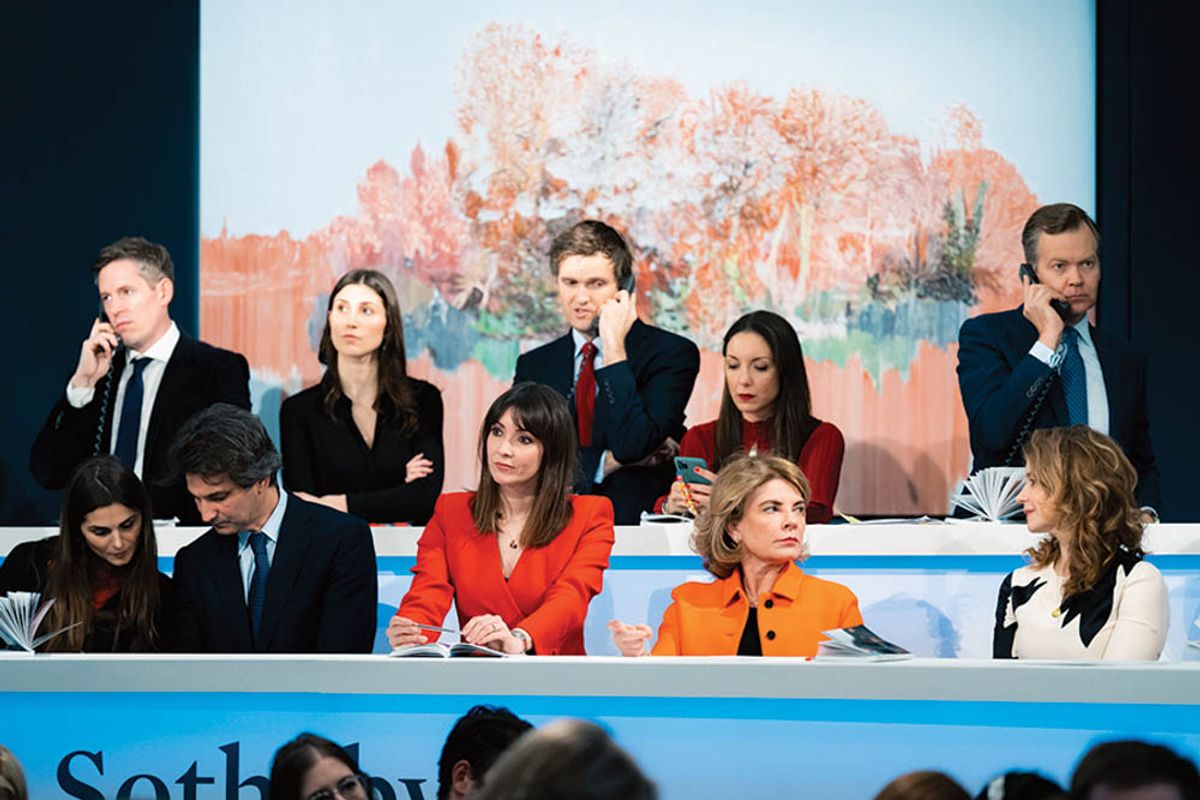The stark dynamics of the current art market played out during London’s week of auctions last month, with contrasts likely to polarise further should Russia’s merciless invasion of Ukraine persist.
The invasion itself was front and centre as the sales began—“Missiles rain on Ukrainian cities” flashed on my phone just as René Magritte’s L’empire des lumières (1961) hammered for £51.5m at Sotheby’s. The perfunctory saleroom applause and celebratory tweets felt uncomfortable—surreal even—given the horror of what was going on outside.
Flight to safety
The auctions themselves painted a picture of a clientele of extremes. At one end, the evening sales fielded the highest proportion of guaranteed works ever—accounting for 64% of the total hammer price according to the analysts ArtTactic, and including the Magritte. This suggests a flight to safety on the part of both sellers and buyers, reducing their risks at the highest levels. The other, more recent, extreme of today’s art market is the intense speculation on young art and artists. Lauren Quin and Rachel Jones were among the 20- and 30-something auction debutantes to hit the six-figure jackpot this season.
It’s easy to assume that there are two different types of players at auction—the older guard collectors who stick to the traditional fare and the fashion-conscious, newer buyers who are trying their luck.
But the reality is not so clear cut. The more predictable auctions become, through guarantees and their staged set-ups, the more buyers and sellers crave the fun of the unpredictable. The art adviser Sibylle Rochat says: “Now that serious blue-chip works are in the tens of millions, even classic collectors want to play a bit more.” Plus, she notes: “The shift to digital during the pandemic has fuelled speculation. Buyers have adjusted to being one step removed from a work, so feel less attached.”
Wobbly works
But not everything was a hit. Classic Impressionist works, favoured by Russian buyers in and out of the country, were wobbly, while nervous sellers withdrew works even during the auctions. One painting from Sotheby’s sale—Monet’s Les Demoiselles de Giverny (1894)—was withdrawn mid-session and is due to reappear at the auction house’s next major season in New York in May.
The question is, will things be any better by then? While the US was initially less impacted than Europe, which has a war on its doorstep, the longer the conflict continues, the more the eyes of the world are on Russia. Sanctions and other economic controls had yet to bite during the London sales and are growing in force every day.
In a world that still needs to recover from the costs of Covid alongside a prolonged hike in energy prices, the chances of a wider financial recession seem more likely.
Meanwhile, the spectre of a wider war has not gone away. For the auction houses, getting in consignments must be even trickier than at the beginning of this year. I would expect even more guarantees—and experiments with untested youngsters—in the next round of sales.



